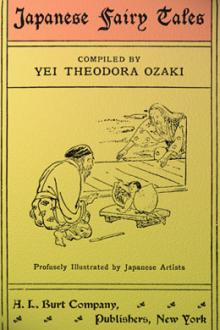Indian Fairy Tales Joseph Jacobs (books to read to improve english .txt) 📖

- Author: Joseph Jacobs
Book online «Indian Fairy Tales Joseph Jacobs (books to read to improve english .txt) 📖». Author Joseph Jacobs
With the fairy tale strictly so called—i.e., the serious folktale of romantic adventure—I am more doubtful. It is mainly a modern product in India as in Europe, so far as literary evidence goes. The vast bulk of the Jatakas does not contain a single example worthy the name, nor does the Bidpai literature. Some of Somadeva’s tales, however, approach the nature of fairy tales, but there are several Celtic tales which can be traced to an earlier date than his (1200 AD) and are equally near to fairy tales. Yet it is dangerous to trust to mere nonappearance in literature as proof of nonexistence among the folk. To take our own tales here in England, there is not a single instance of a reference to “Jack and the Beanstalk” for the last three hundred years, yet it is undoubtedly a true folktale. And it is indeed remarkable how many of the formulae of fairy tales have been found of recent years in India. Thus, the “Magic Fiddle,” found among the Santals by Mr. Campbell in two variants (see Notes on VI), contains the germ idea of the widespread story represented in Great Britain by the ballad of “Binnorie” (see English Fairy Tales, No. IX). Similarly, Mr. Knowles’ collection has added considerably to the number of Indian variants of European “formulae” beyond those noted by M. Cosquin.
It is still more striking as regards incidents. In a paper read before the Folklore Congress of 1891, and reprinted in the Transactions, pp. 76 seq., I have drawn up a list of some 630 incidents found in common among European folktales (including drolls). Of these, I reckon that about 250 have been already found among Indian folktales, and the number is increased by each new collection that is made or printed. The moral of this is, that India belongs to a group of peoples who have a common store of stories; India belongs to Europe for purposes of comparative folktales.
Can we go further and say that India is the source of all the incidents that are held in common by European children? I think we may answer “Yes” as regards droll incidents, the travels of many of which we can trace, and we have the curious result that European children owe their earliest laughter to Hindu wags. As regards the serious incidents further inquiry is needed. Thus, we find the incident of an “external soul” (Life Index, Captain Temple very appropriately named it) in Asbjornsen’s Norse Tales and in Miss Frere’s Old Deccan Days (see Notes on “Punchkin”). Yet the latter is a very suspicious source, since Miss Frere derived her tales from a Christian ayah whose family had been in Portuguese Goa for a hundred years. May they not have got the story of the giant with his soul outside his body from some European sailor touching at Goa? This is to a certain extent negatived by the fact of the frequent occurrence of the incident in Indian folktales (Captain Temple gave a large number of instances in Wideawake Stories, pp. 404–5). On the other hand, Mr. Frazer in his Golden Bough has shown the wide spread of the idea among all savage or semi-savage tribes. (See Note on No. IV.)
In this particular case we may be doubtful; but in others, again—as the incident of the rat’s tail up nose (see Notes on “The Charmed Ring”)—there can be little doubt of the Indian origin. And generally, so far as the incidents are marvellous and of true fairytale character, the presumption is in favour of India, because of the vitality of animism or metempsychosis in India throughout all historic time. No Hindu would doubt the fact of animals speaking or of men transformed into plants and animals. The European may once have had these beliefs, and may still hold them implicitly as “survivals”; but in the “survival” stage they cannot afford material for artistic creation, and the fact that the higher minds of Europe for the last thousand years have discountenanced these beliefs has not been entirely without influence. Of one thing there is practical certainty: the fairy tales that are common to the Indo-European world were invented once for all in a certain locality, and thence spread to all the countries in culture contact with the original source. The mere fact that contiguous countries have more similarities in their story store than distant ones is sufficient to prove this: indeed, the fact that any single country has spread throughout it





Comments (0)